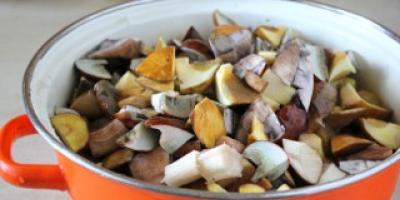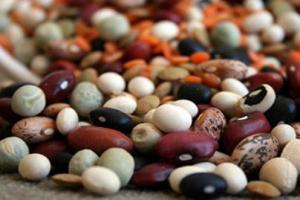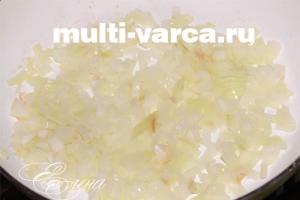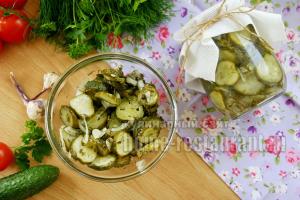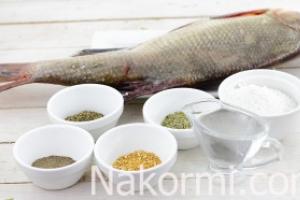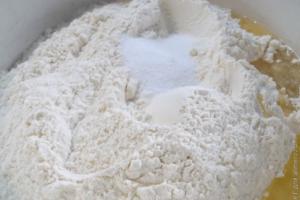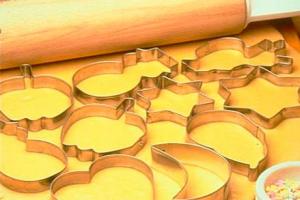Sodium phosphate (E339iii, TSP, trisodium phosphate, sodium triphosphate, trisodium phosphate, sodium orthophosphate) – salt of orthophosphoric acid
Physico-chemical properties.
Sodium phosphate has three varieties:
1) Formula Na 3 PO 4 (E339iii, TSP, anhydrous sodium phosphate). Appearance: colorless crystals. Melting point 1340°C. Density: 2.536 g/cm3. Loss on ignition no more than 2% (120°C for 2 hours, then 800°C for 30 minutes). Substances insoluble in water are no more than 0.2%.
2) Formula Na 3 PO 4 ×H 2 O (E339iii, TSP, sodium phosphate monohydrate). Appearance: colorless crystals or granules. Easily soluble in water; insoluble in ethanol. Loss on ignition no more than 11% (120°C for 2 hours, then 800°C for 30 minutes). Substances insoluble in water are no more than 0.2%.
3) Formula Na 3 PO 4 × 12 H 2 O (E339iii, TSP, sodium phosphate dodecahydrate). Appearance: colorless trigonal crystals. Contains small amounts of sodium hydroxide. Melting point in water of crystallization is 73.4°C. The onset temperature of decomposition is 100°C, complete decomposition is not achieved even at 200°C. Decomposes into sodium phosphate and water. Density 1.64 g/cm3. Let's dissolve in water. In water it is almost completely hydrolyzed into Na 2 HPO 4 and NaOH and has a strongly alkaline reaction. Normally soluble in carbon disulfide. Loss on ignition no more than 45-58% (120°C for 2 hours, then 800°C for 30 minutes). Substances insoluble in water are no more than 0.2%.
The pH value of 1% aqueous solutions is from 11.5 to 12.5.
Sodium phosphate has relatively low solubility at room temperature. It dissolves even worse in salty and acidic water. Therefore, in food production, when preparing marinades, the source water is heated, sodium phosphate or a mixture of phosphates is first dissolved, and then, after cooling, other ingredients are added ( table salt etc.).
| Name of food additive | Conversion factor |
| Phosphoric anhydride P 2 O 5 | 1,000 |
| Sodium phosphate anhydrous Na 3 PO 4 (E339iii) | 2,31 |
| Sodium phosphate monohydrate Na 3 PO 4 ×H 2 O (E339iii) | 2,56 |
| Sodium phosphate dodecahydrate Na 3 PO 4 × 12 H 2 O (E339iii) | 5,35 |
Sodium phosphate is not considered to be a direct preservative. It is considered to be a mild bacteriostatic, because it slows the growth of some gram-positive bacteria: Leuconostoc carnosum, Listeria monocytogenes, Staphylococcus aureus, Bacillus cereus, Bacillus stearothermophilus, Bacillus brevis, Bacillus subtilis, Bacillus sphaericus, Bacillus sp., Micrococcus luteus, Corynebacterium glutamicum, and has little effect on gram-negative bacteria: Salmonella typhimurium, Salmonella enteritidis, Escherichia coli.
Application.
Technical trisubstituted sodium phosphate used as a component of detergents, surfactants in the production of cement and when drilling wells; in drilling fluids as part of a complex polymer additive to low-grade clays and powders.
Trisubstituted sodium phosphate for food used as a buffering agent, sequestrant, emulsion stabilizer.

Processing meat and meat products with sodium phosphate solutions leads to a change in pH inside the product. As a result, a change in the electrostatic forces between actin and myosin occurs, and sequestration of metal cations occurs - the formation of complex compounds through the binding of phosphates and metal cations (for example, Ca 2+, Mg 2+, Fe 2+, Fe 3+). The processed product is less susceptible to moisture loss, the development of gram-positive bacteria, and oxidative rancidity. In addition, processed meat products are able to retain water that was initially absent from the meat and was introduced by some technological method.
Recipe for treating chicken thighs with E339iii solution to improve color and smell.
Sodium phosphate can be used to improve the sensory properties of chilled chicken thighs stored at +2°C. To do this, prepare an aqueous solution of sodium phosphate with a concentration of 10-12%. The weight of chicken thighs to the volume of solution is 1:4. The thighs are immersed in the solution at a temperature of +20°C for 15 minutes. After treatment with solution chicken thighs store at +2°C. As a result of the treatment, chicken thighs on the day of treatment have better color and smell than untreated ones. But after seven days of storage, the color, smell and taste of treated chicken thighs are worse than untreated chicken thighs.

Sodium phosphate is included in solutions for disinfection and cleaning of equipment at enterprises producing canned fruits and vegetables, dried fruits, vegetables and potatoes, sauerkraut and salted vegetables, as well as processing meat, fish and milk.
Sanitary regulations allow the use of sodium phosphate for the purposes and concentrations indicated in the table below. The treatment is carried out by spraying the solution.
| Washing object | Stainless steel equipment steel or other tin-plated metal | Tables, doors, floors, window sills | Equipment made of aluminum | Equipment that comes into contact with hot milk (except those made of aluminum) - for removing milk stones | Glass pipelines, jars, bottles, enamel containers |
| Sodium phosphate (% by weight) | 0,18-0,70 | 3,50 | 0,50 | 0,35 | 0,15-0,30 |
| Caustic soda (% by weight) | - | - | - | 0,10 | 0,32-0,65 |
| Soda ash (% by weight) | 0,05-0,20 | 1,00 | 0,50 | 0,50 | - |
| Liquid glass (% by weight) | 0,25-0,10 | 0,50 | 1,70 | 0,05 | 0,03-0,05 |

Sodium phosphate is allowed for use in the catering departments of preschool institutions (nurseries, kindergartens, kindergartens).
To do this, the dishes are thoroughly cleaned of food residues, washed in hot water (temperature 50 - 60 °C) with the addition of sodium triphosphate at the rate of 100 - 200 g per 10 liters of water. Then pour boiling water over it and dry it on grid shelves. Spoons and forks are washed in the same way as tableware, and then immersed in boiling water for 15 minutes. Tea utensils are washed separately from tableware in two waters at a temperature of 50 - 70 °C.

Sodium phosphate is used in solutions for treating the inner surface of water pipes before applying paint and varnish coatings, such as: KORS copolymer (TU 38-103118-72), XC-720 paint (TU 6-10708-74), XC-710 enamel (GOST 9355 -81), polystyrene resin KORS (TU 38-30322-81), etc. Including using a filler consisting of 10 - 15% aluminum powder PAP-2 (GOST 5494-71).
The essence of the treatment is degreasing by immersion in stationary baths. Degreasing is carried out at a temperature of 70-90 °C. The duration of degreasing depends on the amount of contaminants and usually ranges from 3 to 10 minutes. The quality of degreasing is checked by external inspection. A well-degreased surface is evenly moistened with water. If there are residual grease contaminants, water collects in drops on the metal surface.

Sodium phosphate is included in the solutions recommended by the Ministry of Emergency Situations for the sanitary treatment of property that has been contaminated with spore-forming bacteria. Such property includes: face parts of gas masks, protective raincoats, rubber gloves, rubber boots, cotton clothing, tarpaulins.
The treatment solution consists of sodium phosphate and sulfanol (3.5 and 2 kg per 450 liters of water, respectively). The duration of disinfection should be 1 hour. Processing is carried out in containers using the boiling method. In this case, the design of the containers used must ensure that property does not float up. Upon completion of processing and draining of the solutions, the property is washed first with hot water, then cold water. Washing can be done in a boiling container. The treated property is dried in the summer in dry weather in the open air, in winter and in rainy weather any tents or enclosed spaces are used.

At machine-building enterprises, parts arriving for assembly are cleaned and washed of foreign particles, oil, traces of coolant or preservative coating.
As a detergent for aluminum parts, use a solution containing: sodium phosphate 30 g/l and soda ash 30 g/l.

Sodium phosphate is used to meet the requirements of water chemistry during the operation of electrode boilers. Sodium phosphate additives are added to the water that enters the boiler. This additive reduces the electrical resistivity of water by reducing scale to standardized values. In this way, the energy efficiency of the boiler is maintained, and the time between repairs is increased.
The amount of sodium phosphate added depends on the composition of the original feed water boiler, as well as on the operating mode (hot water, steam) of the boiler and its design features. The amount of additive is calculated based on theoretical calculations and subsequent experimental testing.

Corrosion products during boiler operation are formed not only during boiler operation, but also during periods of boiler shutdowns for repairs or shutdowns due to accidents. To avoid this, boilers must be preserved. One of the preservation methods is to fill the internal volume of the boiler with sodium phosphate solution. The concentration of sodium phosphate depends on the composition of the water. For condensate - 5 kg/m3; for water containing up to 3 g of salt per 1 kg of water - 20 kg/m 3.

Sodium phosphate is used in everyday life to remove scale from dishes. To do this, use 20–30 g of powder, pour it into a dirty container, add hot water and boil for 1–2 hours, after which the scale can be easily scraped off with a brush and rinsed thoroughly with clean water several times. If the scale is not removed immediately, the treatment must be repeated.

The introduction of sodium phosphate into concrete mixtures improves the workability of the mixtures and increases the strength of concrete. The addition of trisodium phosphate in an amount of 0.5% by weight of cement increases the strength of concrete (at 28 days) by 20%.
This additive reduces the volume of open pores and increases the volume of closed pores, which significantly increases the water resistance and frost resistance of concrete. The addition of trisodium phosphate in an amount of 0.5% by weight of cement changes the water resistance of concrete from grade B-2 to grade B-4, and frost resistance increases by more than 2 times.
Receipt.
Sodium phosphate is synthesized by condensation with phosphoric acid.
Salts obtained from sodium hydroxide and phosphoric acid are collectively called sodium phosphates. This food supplement is of completely synthetic origin and is not found in nature in any form.
In food products it is most often used as an antioxidant and preservative, although it also has the properties of an emulsifier and stabilizer. In addition, the substance also acts as an acidity regulator, as it affects the establishment and maintenance of a certain level of acidic environment in the product. It also has a moisture-retaining effect.
Having encountered code E339 in the selected food, the buyer can determine for himself that the product has been treated with sodium phosphates and decide whether it is worth buying and consuming. According to international standards and regulations, the substance is classified as a low-hazard food additive.
Methods for producing sodium phosphates in the laboratory
Today, there are several technologies for the extraction of sodium phosphates: using thermal phosphoric acid, superphosphate or acid obtained by the sulfuric acid method.
One of the methods involves carrying out a neutralization reaction of 25 percent phosphoric acid with a solution of soda ash. The resulting mixture is filtered, evaporated to a certain density and crystallized. If phosphoric acid has a saturation of more than 40%, the neutralization reaction is carried out at a temperature of 85-95 degrees Celsius.
Superphosphates are treated with sodium sulfate solution. The resulting substance is monosodium phosphate, which is filtered in an acidic solution from the insoluble residue and released calcium sulfate, and then also evaporated or granulated in a spray dryer.
Chemical properties of the substance
The additive appears as a white powder in granules or crystals. It is not sensitive to thermal effects and is highly soluble in.
The substance E339 is used as a thickener, as it has the ability to regulate the viscosity of the mixture and improve its texture. As a stabilizer, the E339 additive participates in the formation of the consistency of the product, helps improve it and preserve it unchanged, and protects food from burning during the process. heat treatment. Sodium phosphates have also found their use as emulsifiers, since one of their properties is the ability to create mixtures together with initially immiscible substances, for example, a mixture of oil and water.
Types of dietary supplement
These types of sodium phosphates are commonly used in the food industry;
- 1-substituted sodium orthophosphate (E339i);
- 2-substituted sodium orthophosphate (E339ii);
- 3-substituted sodium orthophosphate (E399iii).
Their chemical formulas differ from each other, but the substances have a similar effect. Therefore, if you see one of these symbols on a product package, you can be sure that sodium phosphates were used in it.
Application in production
 The main purpose of the substance is to improve properties food products Therefore, the food industry is the main “consumer” of this component. It can be found in the following compositions:
The main purpose of the substance is to improve properties food products Therefore, the food industry is the main “consumer” of this component. It can be found in the following compositions:
- bakery and confectionery;
- dairy products and;
- soft drinks;
- dry soups, sauces, pastes, bouillon cubes and other instant products;
- cheeses and;
- meat and fish products;
- dry baking powder and baking mixes;
- biscuits and cakes.
It is especially common in sausages and frankfurters, meat and fish: the substance works as a moisture-retaining component, so in this way it is possible to preserve products without loss of moisture and, accordingly, weight.
It was also widely used in the production of detergents and powders until the 1960s. However, due to the excessive release of nitrogen and phosphorus compounds into water bodies, the quality of waste water, which goes further into water supply systems and released into the natural environment, began to deteriorate significantly, which could harm the aquatic ecosystem. For this reason, restrictions and prohibitions began to appear on the use of substances in such products, and today they are practically not used in the manufacture of powders and detergent products.
Sodium phosphates are also used in the pharmaceutical industry - they are added to laxatives, since the substance has the corresponding effect at a certain dosage.
Impact on the human body, possible harm from consumption
The laxative effect of the substance is known to both doctors and chemists. Products that contain it in their composition should be present in the human diet in limited quantities so as not to provoke a corresponding reaction in the digestive tract.
As for other possible dangers of the E339 food additive, these include the likelihood of diseases of the gastrointestinal tract: gastritis, ulcers, pancreatitis. However, to date, the connection between substance use and these disorders has not been officially confirmed.
The results of studies conducted on laboratory animals indicate that sodium phosphates contribute to disruption of absorption in the body, leaching it from bone tissue and tooth enamel.
In some cases, detergents and powders containing E339 cause allergic reactions in the form of skin rash and redness.
In children, consumption of products containing this component can cause nervous disorders: impaired concentration, aggression, anxiety, hyperactivity, motor restlessness. For them, you should limit the amount of food containing E339.
According to some unconfirmed data, sodium phosphates have an oncogenic effect, that is, they can cause cancer of the digestive tract. Apart from possible treatment for constipation, nothing is known to date about the benefits of the substance for human health.
While manufacturers are following the path of reducing the cost of production food products, additives with the code “E” will be indicated on the labels of various foods, including E339. The component is used as an anti-caking agent, emulsifier, antioxidant and thickener: it helps improve the taste and texture of food, while it is a cheap and profitable ingredient for manufacturers.
Sodium phosphates are substances with an extremely low level of danger to humans; their use is permitted in Ukraine, Russia and the countries of the European Union. Apart from the threat of calcium metabolism disorders in the body, no other information about possible harm health has not yet been officially confirmed. Nevertheless, research on the effects of sodium phosphates on humans continues today.
Sodium phosphateSodium phosphate Na 3 PO 4 is the middle salt of orthophosphoric acid H 3 PO 4 and sodium hydroxide NaOH. Food additive with index E542, belongs to the group of emulsifiers, pH regulators and anti-caking agents.
Synonyms
Sodium orthophosphate, trisodium phosphate, sodium phosphate
Formula
Properties of sodium phosphate
Physical properties
Chemical properties
In aqueous solutions it hydrolyzes at the anion:
Na 3 P0 4 + H 2 O = Na 2 HP0 4 + Na0H.
The solution is alkaline.
When interacting with acids, it forms acid salts:
Na 3 P0 4 + HСl = Na 2 HP0 4 + NaCl,
Na 3 P0 4 + H 2 SO 4 = NaH 2 P0 4 + Na 2 SO 4.
Enters into exchange reactions to form insoluble phosphates:
2Na 3 P0 4 + 3CaCl 2 = 6NaCl + 2Ca 3 (P0 4) 2 ↓,
Na 3 P0 4 + AlCl 3 = 3NaCl + AlP0 4 ↓,
Na 3 P0 4 + 3AgNO 3 = 6NaCl + Ag 3 P0 4 ↓.
The latter reaction is a qualitative reaction to soluble alkali metal and ammonium phosphates. When a solution of silver nitrate AgNO 3 is added to their solution, a yellow precipitate of silver phosphate Ag 3 P0 4 precipitates. And sodium can be detected by coloring the flame yellow.
Preparation of a chemical compound
Laboratory methods of obtaining
Sodium phosphate is prepared by reacting phosphoric acid with sodium hydroxide or carbonate:
H 3 PO 4 + 3NaOH = Na 3 PO 4 + 3H 2 O;
2H 3 PO 4 + 3Na 2 CO 3 = 2Na 3 PO 4 + 3H 2 O + 3CO 2.
Production of sodium phosphate in industry
In industry, sodium phosphate is produced in two stages.
First, by reacting soda ash Na 2 CO 3 with phosphoric acid H 3 PO 4, sodium hydrogen phosphate Na 2 HP0 4 is obtained:
H 3 P0 4 + Na 2 C0 3 = Na 2 HP0 4 + C0 2 + H 2 0,
and then by reacting sodium hydroxide NaOH with the resulting sodium hydrogen phosphate Na 2 HP0 4, sodium phosphate Na 3 PO 4 is obtained:
Na 2 HP0 4 + Na0H = Na 3 P0 4 + H 2 0.
After cooling the neutralized solutions to 30°C, sodium phosphate crystallizes in the form of Na 3 PO 4 ·12H 2 O. It melts at 70°C. To obtain anhydrous sodium phosphate, the crystalline hydrate is calcined for 2 hours at a temperature of 120°C, and then for 30 minutes at a temperature of 800°C.
Application
Sodium phosphate is used in everyday life as a cleaning agent, as it perfectly removes grease. Due to this property, it is also included in detergents. In addition, sodium phosphate softens water by converting hardness salts into insoluble phosphates:
3Ca(HCO 3) 2 + 2Na 3 P0 4 = 6NaHCO 3 + Ca 3 (P0 4) 2 ↓,
3Mg(HCO 3) 2 + 2Na 3 P0 4 = 6NaHCO 3 + Mg 3 (P0 4) 2 ↓.
It is also used in the glass industry to produce optical glasses.
In construction, sodium phosphate is used to strengthen concrete. Its addition also increases the moisture resistance of concrete, as it becomes less porous.
In medicine, sodium phosphate is occasionally used as a laxative and heartburn remedy.
In the food industry it is known as food additive E339(iii). Sodium phosphate is used as an emulsifier, stabilizer, and moisture-retaining agent. It is added to mayonnaises and ketchups, processed cheeses and bakery products However, hydrogen phosphate (food additive E339(i)) and sodium dihydrogen phosphate (food additive E339(iii)) are more often used. Sodium phosphate is treated chicken legs, meat and fish to retain water and maintain weight.
It is classified as a low-hazard substance (hazard class 4), but if overdosed in food, it leads to digestive disorders, and often causes agitation and hyperactivity in children.
Example of problem solution
How much sodium phosphate will be obtained by neutralizing 240 g of sodium hydroxide with phosphoric acid?
Solution.
240 g – x g
H 3 PO 4 + 3NaOH = Na 3 PO4 + 3H 2 O.
3 moles – 1 mole
3 * (23+16+1) = 120 g
3 * 23+31+4 * 16 = 164 g
Let's make a proportion:
120 g NaOH – 164 g Na 3 PO 4,
240 g NaOH – x g Na 3 PO 4.
x= (240 * 164)/120 = 328 g.
Sodium phosphate or sodium phosphate(English) Sodium phosphate) is the general name for a number of sodium salts of phosphoric acids.
Sodium phosphates used in the pharmaceutical and food industries
Historically, each of the sodium phosphate compounds has several names, both in Russian and in English languages. Below are some of the names and chemical formulas of the most common sodium phosphates in medicine and the food industry:
Sodium phosphates in medicine
Sodium salts of phosphoric acids are used in medicine as laxatives, as part of antacids, and also to maintain mineral balance and acid-base balance in the blood. In addition, they are often included in medications as excipients.The laxative effect of sodium phosphate is based on the increase and retention of fluid in the intestines due to osmotic processes. The accumulation of fluid in the colon leads to increased peristalsis and bowel movements.
Sodium phosphate compounds have contraindications, side effects and application features; consultation with a specialist is necessary.
Sodium phosphate - food additive
The composition and requirements for food additives - sodium salts of phosphoric acid are regulated by GOST R 52823-2007. Food additives. Sodium phosphates E339. General technical specifications" This GOST applies to the food additive sodium phosphates E339, which are 1-substituted (i), 2-substituted (ii) and 3-substituted (iii) sodium salts of orthophosphoric acid (hereinafter referred to as food sodium monophosphates) and intended for use in the food industry . GOST divides all food additives E339 - sodium monophosphates into three types:- E339(i), sodium orthophosphate 1-substituted (sodium dihydrogen phosphate)
- E339(ii), 2-substituted sodium orthophosphate (sodium hydrogen phosphate)
- E339(iii), 3-substituted sodium orthophosphate (sodium phosphate).
Sodium phosphate (colloquially, correctly: sodium phosphate, orthophosphate, bone phosphate or Na 3 PO 4) is a white hygroscopic medium salt, thermally stable and melting without decomposition (at temperatures of 250 degrees and above). It dissolves in water, creating a highly alkaline environment.
Sodium phosphate is obtained by exposure to alkali (neutralization), by dehydration of sodium hydrogen orthophosphates.
Used as emulsifiers and pH regulators, as well as anti-caking agents. Sodium phosphate is used by manufacturers. Triphosphate is especially often used, of which powders can contain up to 50%. To (eliminate hardness) use dehydrated substances that form a complex with a number of metals (magnesium, calcium, barium, etc.). Sodium phosphate (technical, under the brand name “B”) is used in the manufacture of glass, paints, and in ore dressing. But Na 2 HPO 4 .12H 2 O (food grade, under the “A” brand) is used primarily in the food industry as a leavening agent. It improves the consistency of condensed milk, cheeses, and sausages. Sodium phosphate is used for electrophoresis (electrolytic processes) and in photography (as a developer component).
Let's take a closer look at orthophosphates.
Sodium tripolyphosphate is produced under two markings: “A”, “B”. It is packaged only in special MKR-1 containers and transported in equipped (special) mineral carriers. Expiration date unlimited.
Trisodium phosphate (sodium phosphate, trisubstituted) is used in the food, pulp and paper industries, energy, production of powders, cleaning pastes, dishwashing detergents and as a surfactant in cement production. When drilling, it is included as a polymer additive. Trisodium phosphate perfectly degreases the surface of any equipment, so it is in demand for cleaning. Outwardly similar to scales (crystals) with alkaline properties, non-flammable. It ranks second in terms of impact on the human body.

A completely logical question: “With such widespread use, does sodium phosphate cause harm to our body?”
Antioxidant (on labels it is listed as E-300 (and up to E-339) allows you to preserve color, avoid the appearance of bitterness and protects against oxidation. This can be either a natural compound (vitamin E, ascorbic acid, familiar to everyone), or synthesized chemically, not found in nature. It is added to emulsions containing oils (for example, mayonnaise, ketchup). In addition to the properties of an emulsifier and stabilizer, Na 3 PO 4 is a water-retaining agent, a complexing agent, and a stabilizer, for example, in large-volume baked goods (bread factories, bakeries). high rise of the dough, and with a porous and light structure. Here, between and the phosphoric acid salt, the modification E-450 (SAPP, sodium pyrophosphate) is especially popular. This baking powder allows for excellent rise of the dough (maximum in comparison). with analogues), preserved even after baking. Added to muffins, flatbreads, gingerbreads, pizza, cakes. Recommended for preparing almost any dough (frozen yeast, whipped, crumbly shortbread).

The buffering properties of E-450, as well as the ability to bind calcium, are used in dairies. Pyrophosphates have a specific effect on casein - it opens, swells and acts as an emulsifier, which is convenient when preparing puddings, imitation dairy products, and desserts. Condensed milk, obtained by extracting water, also cannot do without the stabilizer salt DSP (disodium phosphate).
In the meat industry, thanks to the emulsifiers we discuss, the overall yield of products is significantly increased while simultaneously stabilizing the consistency and improving the color.
It is better to limit the use of products containing sodium phosphates (or prepared with their use), since the rapid binding of calcium leads to a deficiency of the latter in the body. In addition, this substance is part of laxatives, so an excessive amount of sausage can disrupt the functioning of the gastrointestinal tract.
